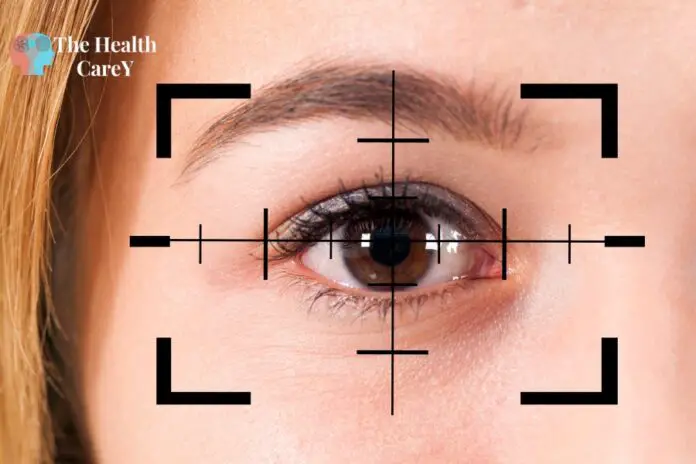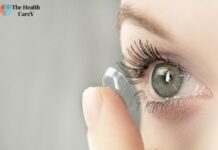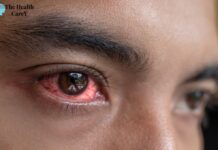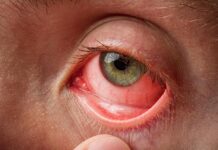Experiencing watery eyes can be an uncomfortable and frustrating experience. When the eyes produce too many tears or are not draining correctly, it can lead to excessive tearing. This can occur for various reasons, ranging from minor irritations to more serious underlying conditions.
One common cause of watery eyes is allergies. Allergens such as pollen, dust, and pet dander can cause the eyes to become irritated and produce excess tears. Other causes may include eye infections, dry eye syndrome, and eyelid problems such as blepharitis or ectropion.
If you are experiencing watery eyes, it is essential to identify the underlying cause to find the most effective treatment. In some cases, simple home remedies such as warm compresses or over-the-counter eye drops may be enough to alleviate symptoms. However, if the problem persists or is accompanied by other symptoms, such as pain or vision changes, it is essential to seek medical attention.
Why Does My Eye Keep Watering? Causes
Excessive tearing, also known as epiphora, is a condition that can be uncomfortable and frustrating. It can be caused by a variety of factors, including:
-
Dry Eye Syndrome
Dry eye syndrome occurs when the eyes do not produce enough tears or the tears evaporate too quickly. This can cause the eyes to become irritated and inflamed, leading to excessive tearing. Factors contributing to dry eye syndrome include aging, certain medications, and environmental factors such as dry air or wind.
-
Allergies
Allergies can cause the eyes to become red, itchy, and watery. This is because the body’s immune system overreacts to a substance, such as pollen or pet dander, causing an allergic reaction. The eyes may produce excess tears to flush out the allergen.
-
Blocked Tear Ducts
The tear ducts are responsible for draining tears away from the eyes. Tears can accumulate and overflow if they become blocked, causing excessive tearing. Various factors, including infections, injuries, and tumors, can cause blocked tear ducts.
-
Conjunctivitis
Conjunctivitis, also known as pink eye, is an inflammation of the conjunctiva, the thin membrane covering the eye’s white part. A viral or bacterial infection, allergies, or irritants such as smoke or pollution can cause it. Conjunctivitis can cause excessive tearing, redness, itching, and discharge.
-
Foreign Objects in the Eye
If a foreign object, such as a piece of dirt or an eyelash, gets into the eye, it can cause irritation and excessive tearing. The eye may produce tears in an attempt to flush out the object.
Eye Watering Symptoms
Eye-watering, also known as epiphora, can be caused by various factors. Understanding the symptoms associated with this condition is essential to identify the underlying cause and seek appropriate treatment. The following are some common symptoms of eye-watering:
-
Redness
One of the most noticeable symptoms of eye-watering is redness in the affected eye. This can be caused by inflammation or irritation of the eye, which can lead to increased blood flow and dilation of blood vessels.
-
Swelling
In addition to redness, eye-watering can also cause swelling around the eye. This can be due to an allergic reaction, infection, or injury to the eye.
-
Itching
Another common symptom of eye-watering is itching. This can be caused by allergies or eye irritation and can be accompanied by redness and swelling.
-
Blurred Vision
Eye-watering can also cause blurred vision, making it difficult to see clearly. This can be due to excess tear production or a blockage in the tear ducts, leading to a buildup of fluid in the eye.
-
Sensitivity to Light
People with eye-watering may also experience sensitivity to light, also known as photophobia. This can be caused by inflammation or infection of the eye and can make it challenging to be in bright environments.
How to make Eye Watering Diagnosis
-
Physical Examination
The first step in diagnosing eye watering is a physical examination. The doctor will inspect the eye for any signs of inflammation, infection, or blockage in the tear ducts. They may also check for any abnormalities in the eyelids or eyelashes that could be causing the watering.
-
Tear Production Test
A tear production test may also be conducted to determine if the eye produces enough tears. This test involves placing a small strip of paper under the lower eyelid to measure the number of tears produced over a certain period. If the eye does not have enough tears, it may be causing the watering.
-
Fluorescein Eye Stain Test
The fluorescein eye stain test is another diagnostic tool used to identify any corneal abrasions or ulcers causing the watering. A small amount of dye is placed on the eye’s surface, and the doctor will examine it with a blue light. Any areas of damage will appear green under the light.
-
Imaging Tests
In some cases, imaging tests such as CT scans or MRIs may be ordered to get a closer look at the eye structures and surrounding tissues. These tests can help identify any underlying conditions causing the watering.
What is Eye Watering Treatment?
Various treatments are available for eye-watering, depending on the underlying cause. Your doctor will recommend a treatment plan based on your specific condition.
-
Artificial Tears
Artificial tears are a standard treatment for eye-watering caused by dry eyes. These drops help to lubricate the eyes and provide relief from irritation. They can be purchased over the counter or prescribed by a doctor, depending on the severity of the condition.
-
Antibiotics
If an infection causes eye watering, antibiotics may be prescribed. These medications help to clear up the infection and reduce inflammation. They can be administered orally or as eye drops.
-
Surgery
In some cases, surgery may be necessary to treat eye-watering. This is typically reserved for more severe cases or when other treatments have been ineffective. The type of surgery performed will depend on the condition’s underlying cause.
-
Warm Compresses
Warm compresses can treat eye-watering caused by a blocked tear duct. The warmth helps to loosen and clear the blockage, allowing tears to flow freely. This treatment can be done at home using a clean, warm washcloth.
Following your doctor’s recommended treatment plan is essential to manage eye-watering effectively. In some cases, lifestyle changes such as avoiding allergens or wearing protective eyewear may also be recommended.
Prevention For Eye Keep Watering
While there are several causes of eye-watering, steps can be taken to prevent it from happening. Here are a few things that can be done to reduce the risk of eye-watering:
-
Avoiding Irritants
One of the easiest ways to prevent eye watering is to avoid irritants that can cause it. This includes things like smoke, dust, and pollen. If you know that you will be exposed to an annoyance, it is a good idea to wear protective eyewear to help reduce the risk of eye-watering.
-
Cleaning Contact Lenses Properly
If you wear contact lenses, it is essential to clean them properly to prevent eye-watering. This includes using the right solution to clean them and ensuring they are properly stored when not in use. Failure to do so can lead to eye infections and other problems that can cause eye-watering.
-
Wearing Protective Eyewear
If you work in an environment with a risk of eye injury, it is essential to wear protective eyewear to prevent eye-watering. This includes things like safety glasses and goggles. By wearing protective eyewear, you can reduce the risk of eye injury and the resulting eye-watering.
Also Read:
How Long Is Pink Eye Contagious





















